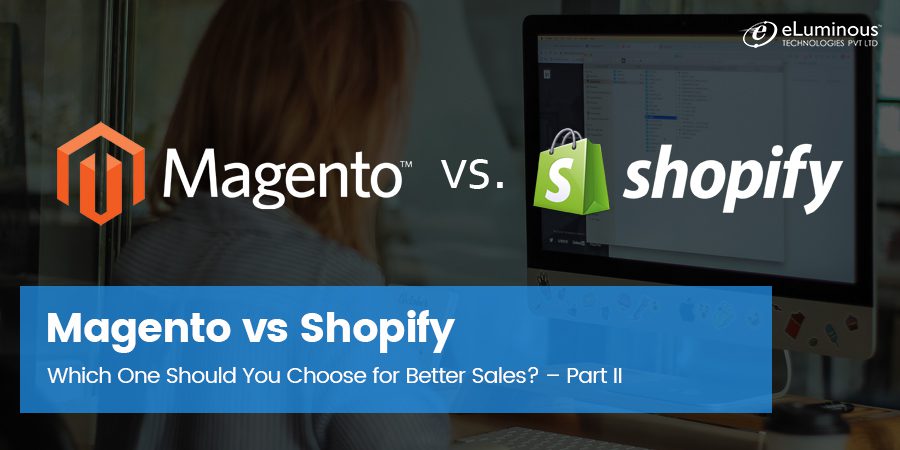$523 billion. $598$ billion. $861 billion.
Those are the annual eCommerce sales in the US for 2018, 2019, and 2020, respectively. While the huge jump from 2019 to 2020 is explained by COVID-19, online was outpacing offline even before that, both in sales growth and consumer preference.
A good example of the latter is this JD Power survey of American auto buyers which stated that up to 43% of consumers would prefer to buy an automobile entirely online, without visiting the dealer! More shockingly, this was pre-COVID.
The point here is that with everything from clothing to cars finding eager buyers online, it’s important for retailers to branch out into the virtual world.
Depending upon your target audience’s preferences, you could go for either a 100% online eCommerce setup or an omnichannel one that leverages both offline and online retail.
But while these stats make the decision to go online easy, the same can’t be said about choosing the right eCommerce platform for online store development, especially when the contenders are WooCommerce, Magento, and Shopify.
These are the three most dominant eCommerce platforms today and between them, have over 4.5 million stores/users. However, each platform has its strengths and weaknesses, making the choice tricky.
If you find yourself in a similar trilemma, read this eCommerce platform comparison to know which eCommerce platform is best for you.
Main Features of WooCommerce: Pros and Cons
While it has the largest user base, tagging WooCommerce as a proper platform is a misnomer. Rather, it’s a WordPress plug-in that allows you to add eCommerce functionality to an existing WordPress website.
This explains WooCommerce’s wild popularity as WordPress is the world’s most popular CMS today. But don’t let its WordPress origins dissuade you from its eCommerce potential.
For instance, WooCommerce powers vibrant and popular sites such as Porter & York, Singer, and even All Blacks, the official New Zealand rugby union team’s store.
WooCommerce Pros:
- Open-source. It’s free to use.
- No limit to customization and personalization.
- Rich choice of free and paid customizable themes created specifically for WooCommerce sites.
- SEO-friendly website with lots of inbuilt, editable SEO features.
- Easy to list products, send bulk emails, maintain multiple store inventories, and track analytics etc.
- Tons of payment gateway options including Stripe, PayPal, Square, WooCommerce Payments etc.
WooCommerce Cons:
- The wide range of plugins and extensions needs a balancing act as they can affect your site’s performance if used indiscriminately.
- Lots of extensions are paid-only.
- Although free to use, you pay for other stuff such as hosting and to hire WooCommerce developer.
- No customer support.
Main Features of Magento: Pros and Cons
Owned by Adobe, Magento is a tinkerer’s dream as it offers the widest range of customization options among all eCommerce platforms. This makes it popular with enterprises that like to retain full control of their eCommerce presence.
Magento is written in PHP and is available for free and in a paid Enterprise Edition which gets several advanced features. This is why it’s the top eCommerce platform choice for name-brands such as Nike, Ford, and Nestle Nespresso.
Magento Pros:
- Open-source. It’s free to download and use.
- Limitless customization opportunities with over 5,000 extensions to choose from.
- Supports large product catalogs with several modification options, native product categories, cross-selling and upselling modules etc.
- Highly scalable. Number of items in a Magento store can be easily increased to 250,000.
- Offers loads of inbuilt SEO features.
- Supports a wide range of payment options including PayPal, Authorize.net, Amazon Payments, and Stripe etc.
- Strong user community to help find solutions to any problem.
Magento Cons:
- No inbuilt readymade templates to choose from. Everything has to be built from scratch.
- Ill-suited for beginners as a fair bit of coding is involved, meaning you will have to hire Magento developer to create a fully-functional store.
- Although it’s a free eCommerce platform, you still pay for hosting, certain extensions, the Enterprise edition, and developer costs.
- Customer support only for the paid version of Magento.
Read more: Magento vs Shopify – Which one should you opt for Better Sales? (Part-1)
Main Features of Shopify: Pros and Cons
Ironically, what WordPress did for the world of blogging and website building, Shopify did for eCommerce and aspiring online sellers.
Like WordPress, where you can simply drag and drop your way to a fully-functional website, Shopify allows you to create an online store in the least possible time using a range of premade store themes and functionalities.
This has made Shopify quite popular with small and medium eCommerce operators such as Taylor Stich and Pipcorn though it’s not uncommon to see established names such as The Economist, Lindt, and Heinz use it too.
Shopify Pros:
- Easy to use for first-timers or novices as no coding is required to create a store.
- Even if you need help, it’s affordable to hire Shopify developer
- All essential eCommerce features available out of the box with the option to add more via the Shopify App Store which comprises 3000+ apps.
- Offers several inbuilt and optional SEO features.
- Consistent performance as hosting and other UX-influencing factors are handled by Shopify.
- Supports over 70 payment gateways including Amazon Payments, Stripe, and PayPal.
- Integrates easily with social media and blogging platforms.
- Offers a subscription model which covers all costs related to creating and operating an eCommerce store.
- 24×7 customer support.
Shopify Cons:
- Subscription doesn’t cover costs related to third-party app integrations.
- Because of the template approach, Shopify offers limited scope to customize and personalize your store’s different aspects.
- Charges a transaction fee on every sale you make.
Read more: What is Headless Commerce & How Can It Help Your ECommerce Business
WooCommerce vs Magento vs Shopify: Comparing Across Essential Factors
1) Ease of Use
By now, you would’ve probably guessed that Shopify is the easiest to use of this lot and you’re right. It offers a user-friendly and self-hosted solution that doesn’t require any coding to create an up-to-date and fully-functional eCommerce store.
Next up is WooCommerce as anyone who has experience with WordPress can understand the various plug-ins, themes, and functionalities it offers. However, you might need some WooCommerce developer help if and when you customize the store.
Magento is the least easy-to-use eCommerce platform, especially if you’re a beginner. All its customizability and plug-in options come with a steep learning curve. In other words, to make the most of this platform, you have to pay for professional web application development services.
2) SEO-friendliness
SEO-friendliness should be seen as a knob rather than a switch. This means your judgement of a platform’s SEO-friendliness should depend upon how much of it you are going to use.
For instance, in outright terms, Magento is the most SEO-friendly platform in this comparo. It offers inbuilt analytics, generates SEO-friendly URLs and meta tags, and gets Google Maps integration, among others.
This also means you’ll need reasonable SEO expertise to make the most of Magento’s SEO-friendliness, i.e. hire outside help. This is yet another reason why established businesses prefer Magento.
Thanks to its WordPress background, handling WooCommerce’s SEO capabilities is relatively easier. There are scores of plug-ins and extensions to improve your search engine visibility. You also have more freedom to play around with different settings, ruling out the need to hire outside SEO service.
Although Shopify trails WooCommerce by only a little in SEO-friendliness, the gap widens on the customizability front. While it does offer all the basic search engine optimization options, there’s a point beyond which you cannot refine the SEO. And in today’s hyper-competitive online world, that extra sliver of SEO might make all the difference.
3) Performance
Magento offers excellent performance as it allows you to optimize pages for higher performance, reduce server response times, and make backend operations more efficient. This ensures your Magento store maintains a consistent level of performance across different product catalog sizes and varying visitor traffic.
Magento is also the most scalable eCommerce platform, allowing merchants to change server resources and product listings at the drop of a hat without any hit to performance. This is the main reason why Magento is popular with large organizations and mid-sized businesses.
For WooCommerce, performance bottlenecks are usually caused by the hosting provider rather than any inherent flaws in the platform. And though it scales well, WooCommerce is generally used by mid- to small-sized businesses. Moreover, as with Magento, optimizing WooCommerce for more performance does need some coding knowledge.
Since its self-hosted, Shopify offers very consistent performance levels. Shopify servers dynamically adapt to your store’s workload, ensuring a smooth and quick loading of your website and its features.
Where Shopify loses out though is scalability, especially with its basic plan. To add products beyond a certain limit, you’ll have to opt for a higher-priced subscription plan like Shopify Plus. While this solves the scalability issue, it also inflates your overheads.
Read more: Magento vs Shopify: Which One Should You Choose for Better Sales? (Part-II)
4) Customizability
The sky is the limit as far as customizations with Magento are concerned. Since the platform uses a non-template approach, you can customize every aspect of your Magento store during the development process.
WooCommerce offers a lot of customization options such as altering core features of the store’s main theme, creating your own plug-ins, and designing your store layout.
Shopify, owing to its self-hosted nature, offers limited customization options. For instance, you cannot change your chosen theme’s core features. And since Shopify is not open-source, you have to make peace with hard restrictions in areas such as the store’s backend.
5) Support
While there’s no direct customer support, WooCommerce piggybacks on WordPress’s large and diverse community for most troubleshooting. For instance, you can easily use an extension or piece of code developed by another WooCommerce user to improve your online store.
Magento, similarly, has a vibrant community comprising amateurs, experts, and certified members. This makes it easy to find solutions for common problems. And if you opt for Magento’s Enterprise edition, you can also avail of direct customer support service.
An upside to being a self-contained solution is that Shopify offers the best customer service and support of these three eCommerce platforms. Available round the clock, you can rely upon Shopify’s streamlined support system to get assistance via phone, email, or live chat.
6) Security
Thanks to the tight control it exercises over its services, Shopify’s security is second to none. It’s reliable, secure, offers an SSL certificate, complies with PCI standards, and keeps your store fortified against outside threats through regular server-side maintenance and updates. As a user, all you need to do is run your store while Shopify does the rest.
WordPress regularly releases updates and bug-fixes to ensure WooCommerce’s security. While this ensures your store’s safety at a platform level, WooCommerce also offers several security plug-ins to protect your website from malicious elements.
Your Magento store will be as secure as you want it to be, i.e. provided you can spend enough on developers and a quality hosting service.
There’s also a huge collection of Magento security extensions that can block threats, strengthen passwords, monitor vulnerabilities, and scan changed files. Lastly, security patches for Magento are also released from time to time.
7) Pricing
As it’s free to download and use, WooCommerce is preferred by small to medium-sized eCommerce players. However, it still needs you to pay for a domain name, hosting, and SSL certificate to run your WooCommerce store.
This can cost anywhere from $180 to $360 per year. And if you need expert help, be prepared to shell out $20-200/hour to hire WooCommerce developers.
Shopify offers subscription plans ranging from $29 to $299 per month. These plans differ in terms of features though all of them include a domain name, hosting, SSL certificate, and PCI compliance. That said, you might still feel the need to buy third-party extensions to give your store certain features and help it cope with additional traffic.
This will cost you more, as will Shopify’s per sale transaction fee of 0.5%-2% if you don’t use Shopify’s payment gateway. On the bright side, it’s significantly cheaper to hire Shopify developers with an average cost of $20-50/hour. And though there’s a Shopify Lite plan costing $9 per month, it’s not worth any serious eCommerce seller’s while.
While Magento’s basic version is free to download and use, the Enterprise Edition has a yearly license fee of $22,000 for users with yearly revenue of less than $1 million. Needless to say, this fee will increase as your gross sales revenue goes up.
The numbers are even higher for the Cloud version of Magento where the license fee is twice that of the Enterprise Edition. This puts Magento squarely in the territory of medium- to large-sized eCommerce businesses.
As for the cost to hire Magento developers, expect to pay anywhere from $40 to $400 per hour depending on the quality and experience you choose.
Read more: Shopify vs WooCommerce – Who Wins This Battle of ECommerce Platforms?
Over to You
Now that we’ve reached the end of this comparison, here are three broad conclusions to simplify your choice of the best eCommerce platform.
If you’re a small- to mid-sized business that needs a user-friendly solution to start an eCommerce website without putting in too much time, money, and effort, go for Shopify.
If you’re a business that already owns a WordPress-based website and wishes to add eCommerce functionality to it without complicating things, go for WooCommerce.
If you’re a mid- to large-sized business that wants to build a fully customizable and comprehensive eCommerce solution from scratch, go with Magento.
And if you’d like more help on how to choose the right eCommerce platform, please get in touch with us today. As a custom web application development company, our eCommerce experts can suggest a suitable platform after understanding your goals and constraints.
Thank you for reading! If you liked this post, do subscribe to get informative posts about web and mobile development, data analytics, and eCommerce delivered to your inbox.

Digital Marketing Manager
Responsible for developing and managing web presence, Sarah has been associated with eLuminous Technologies for 7+ years. Strategic and innovative with a passion for Content Marketing and enhancing brand awareness. Administered all business marketing operations and advertisement campaigns that eventually increased web traffic. She works under the motto “Think like a Publisher, not a Marketer.”



